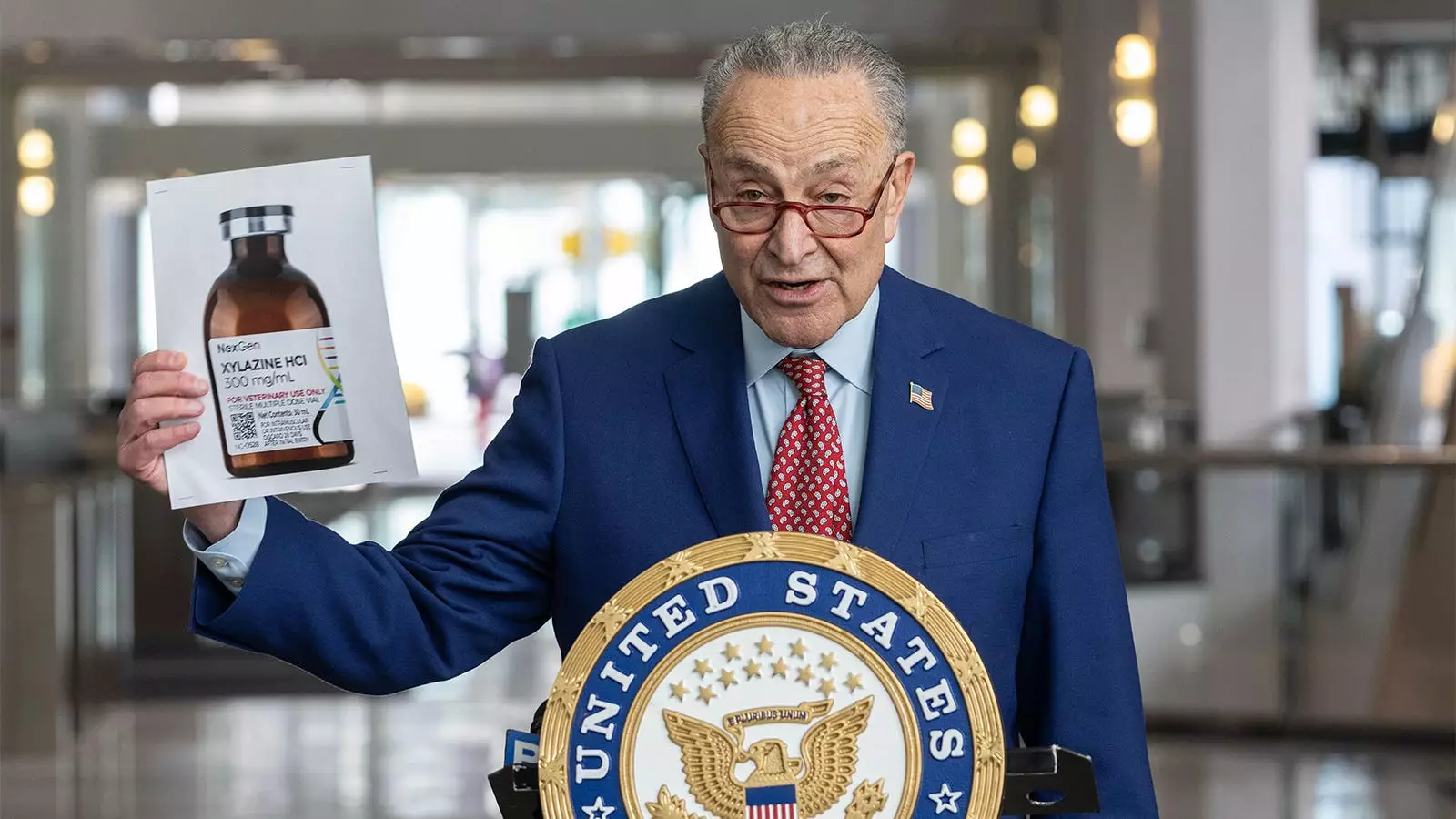In early 2023, physicians began to raise concerns about a dangerous contaminant called xylazine that was being mixed with fentanyl, a potent opioid sold on the streets. Xylazine, commonly used as a veterinary tranquilizer, was being added to fentanyl to enhance its effects and prolong its high. The introduction of xylazine into the illicit drug market brought about unforeseen complications, including the development of necrotizing wounds in injection drug users. These wounds often required extensive treatment, and in severe cases, amputation became necessary. The presence of these necrotic wounds and their devastating consequences caught the attention of healthcare professionals, prompting further investigation into the issue.
Since the initial concerns were raised, various regulatory bodies and lawmakers have taken action to address the xylazine-laced fentanyl problem. In late February, the FDA implemented an import alert on xylazine, enabling its staff to detain shipments of any xylazine product that appeared to be against the law. This measure aimed to ensure that xylazine products were properly labeled, not adulterated, and legitimately intended for veterinary use.
Following suit, in April, the White House Office of National Drug Control Policy (ONDCP) labeled xylazine-tainted fentanyl as an “emerging drug threat.” This designation marked the first time a substance had been recognized as such on a national level. The ONDCP went on to publish a National Response Plan in July, outlining strategies to combat xylazine-laced fentanyl. These strategies included testing for xylazine, improving data collection, disrupting the supply chain, and exploring regulatory options.
Collaborating with other agencies, the ONDCP requested the Drug Enforcement Administration (DEA) and the Department of Homeland Security to investigate the sources of illegal xylazine. Their findings indicated that solid forms of xylazine were arriving from countries like China, while liquid forms were either diverted from veterinary supply chains or masquerading as veterinary drugs. In some cases, xylazine was even mixed with fentanyl at the southwest border. These revelations shed light on the complexity of the issue and the need for a comprehensive response from various entities.
To further mitigate the spread of xylazine-laced fentanyl, the House of Representatives passed the Support for Patients and Communities Reauthorization (SUPPORT) Act of 2023. This bill included a provision to permanently classify xylazine as a Schedule III controlled substance under the Controlled Substances Act. However, this classification did not impede veterinarians and ranchers from accessing xylazine for legitimate veterinary use. The American Veterinary Medical Association (AVMA) endorsed this bill, emphasizing the importance of equipping law enforcement with the tools to combat illicit xylazine while preserving its vital role in veterinary medicine.
While the SUPPORT Act has passed the House, its fate in the Senate remains uncertain. Some experts, like Andrew Kolodny, MD, have expressed concerns about potential loopholes in the legislation that could exempt xylazine manufacturers, distributors, and veterinarians from certain regulations applied to other Schedule III drugs. Striking a balance between effective regulation and maintaining access for legitimate veterinary purposes can be challenging.
Scheduling a controlled substance can occur through two avenues: congressional action or collaboration between the FDA and the DEA. In the case of xylazine, the DEA conducted an “8-factor analysis” earlier this year, which is a required step in the scheduling process. Simultaneously, the AVMA engaged with relevant Congressional offices and committees discussing the scheduling of xylazine. The outcome of these efforts and the future of xylazine regulation will depend on the collaboration between regulatory bodies and lawmakers.
One of the prevailing challenges in addressing the xylazine-laced fentanyl issue is the lack of a national tracking system for xylazine-positive overdose deaths. Not all jurisdictions routinely test for xylazine in postmortem toxicology, making it difficult to accurately quantify the extent of the problem. Improved data collection and standardization of testing protocols are necessary to gain a comprehensive understanding of the impact of xylazine-laced fentanyl on public health.
The emergence of xylazine-laced fentanyl has spurred action from regulatory bodies, lawmakers, and healthcare professionals. Efforts to control and regulate the xylazine problem have included import alerts, national response plans, and proposed legislation. Striking a balance between effective regulation and maintaining access for legitimate veterinary use remains a challenge. Improved data collection and testing protocols are crucial in addressing this issue and understanding its full impact. Ultimately, a multifaceted approach that involves collaboration between various stakeholders is necessary to combat the dangers posed by xylazine-laced fentanyl.


Leave a Reply